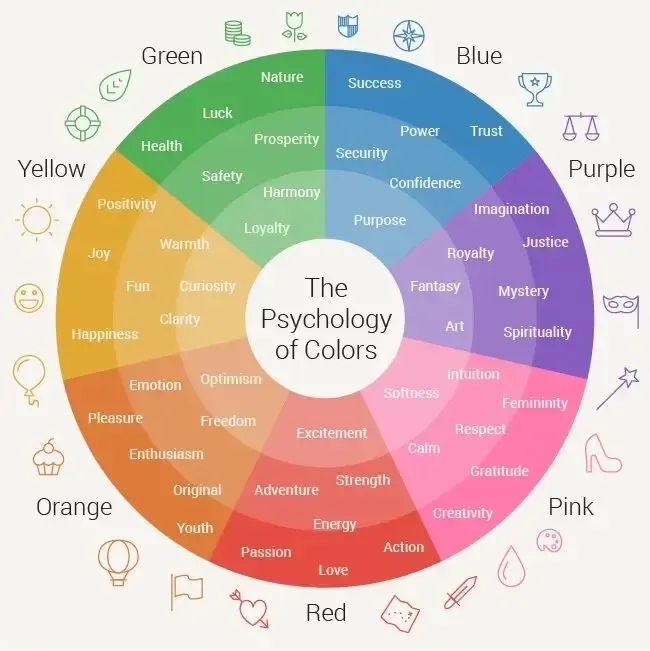6 Key Elements of Powerful Brand Storytelling

Companies that want to grow their brand and establish a strong online presence must develop a detailed marketing strategy. However, that isn’t always as easy as it may sound. Traditional marketing techniques can help you sell products and improve your bottom line. Unfortunately, they can’t help you advance your brand. The best way to get your audience to care about your company or product is to tell a compelling story. At Origin Media Group, we apply a science-based approach to branding and marketing, and have pinpointed 6 key elements of powerful brand storytelling.
What is Brand Storytelling, and Why is it Important for Your Company?
The thing you have to understand about modern audiences is that they don’t care about your products. That is - not unless you give them a reason to care. The average online user has gotten so used to advertising that they can scroll past an ad and not be able to tell you what it is about. This poses an interesting question: how do you get your brand noticed?
Instead of using promotional tactics, you can use powerful brand storytelling to create a narrative that resonates with users. It should inform audiences of your origins and
which problems you plan to solve for your customers. Your storytelling should also clearly reflect your brand values and integrate with your overall brand strategy. These elements should be recognizable, even when you don’t explicitly state them in your story. We realize that this kind of narrative sounds like a tall order, but we can help guide you through the necessary steps.
6 Key Elements of Powerful Brand Storytelling
1. A Clearly Defined Tone
One of the first steps when planning a marketing strategy is accurately defining the goals you want to achieve. Unfortunately, something that often gets overlooked is setting the right tone for your message. You’ve undoubtedly seen marketing campaigns that are all over the place and feel disjointed. Those campaigns are usually the result of groupthink and trying to cram too many ideas into one project.
Instead, we suggest taking a moment to think about what you want to say and how it should sound. Find the correct narrative voice that matches your message. Sadly, we can’t give you a direct answer of what exact tone you should use. What’s good for your brand will depend on the type of products you are offering and who your users are. However, you should
ensure that your tone is appropriate for what you are trying to achieve.
If you are struggling to find the right tone, you can look at who your customers are and how they communicate in online spaces. The best way to understand who your customers are and what they are interested in is to
create customer profiles for each of your existing demographics. Unfortunately, that will only give you information on your current customers. To achieve brand growth, you should also create
a profile for your ideal customer. Start thinking from the perspective of the customers you want to attract, and your writing tone will come to you.
2. Find The Right Platform
Your choice of medium can help or hinder your storytelling efforts. Think about how you ideally envision telling your story. Is it through a lengthy blog post, or do you plan to do something more visual like a series of short 10-second videos? Modern marketing, and particularly social media networks, give you plenty of options for how you can tell your story. If you are struggling to find the right way to present your brand, feel free to contact us, and we can explain the intricacies of social media management and content marketing. Remember that audience expectations will be baked into the platform you choose. Certain forms of storytelling will naturally work better on specific platforms.
3. Be Consistent in Your Narrative
If you want your storytelling to resonate with your audience, you must be consistent with what you tell them. Although individual marketing goals for each campaign may differ, your core brand values will always be the same. Let those values be your guide, and you will never stray far from your intended narrative.
Another thing to keep in mind is that consistency is paramount across all interactions with your customers. Therefore, you should
be consistent in your actions as well as words. All of your employees must also understand this concept, especially those who have direct interactions with customers. As far as your customers and broader audience are concerned, your employees are your brand.
4. Honesty and Authenticity Lead To Powerful Brand Storytelling
Brands often get called out for being fake when they half-heartedly try to support a cause. Your fans will know when you are faking it, so it’s best if you speak from truth and experience. Don’t be afraid to develop a genuine rapport with your customers. Most will actually interpret that as you being authentic. This approach can help you win over the sympathies and trust of the public.
It would help if you also remembered to stay honest when you make a mistake. It’s much better to own up to your failings and
demonstrate a willingness to improve than it is to get caught out on a lie. People love comebacks and will be willing to give you a second chance if you have been honest with them.
5. Customer Engagement and Interaction
Reading a book is, by nature, a passive form of interaction. However, modern marketing can allow you to engage your customers and keep them interested and involved. Audiences are generally much more interested in customer-centric marketing, which you can use to your advantage. Invite your audience to participate in your marketing by sharing their stories and successes. Promote interaction with your brand, and let your story evolve through comments, discussions, and user-created content. Customer engagement can also be a great way to gather feedback and monitor how your campaign is received. Therefore, we suggest listening to what your users have to say.
6. Create a Strong Emotional Response
The best marketing relies on eliciting an emotional response from your audience. However, traditional marketing often has difficulty achieving this without using powerful brand storytelling. With the right story, you can tell users why they should care about your brand in the first place. We can look at the literary narrative structure to help us understand how we can do this.
One of the most critical narrative elements for powerful brand storytelling is telling your audience about your
Origin Story. Most epic journeys start with just a few humble steps, and that’s nothing to be ashamed of. Users will actually care more about your brand if you show them how far you’ve come. If you need help defining your origin story in a way that resonates with your ideal customer, you can follow a
step-by-step guide that can help you put together
successful and meaningful messaging for your brand.
Don’t forget to use other narrative elements to enhance the storytelling for your brand. You will get the best emotional response if your story has a purpose, characters, and tension. You can consider reaching out to niche influencers whose audience overlaps your target demographic. Influencers can add their character and personality to make your storytelling more compelling.
The Bottom Line
Now that we’ve covered the 6 key elements of powerful brand storytelling, you should have a solid frame of reference to start creating your narrative. While looking to others for inspiration is perfectly acceptable, you should always stay true to yourself. A story that’s unique to your brand will help you stand out and draw some much-needed customer attention.












